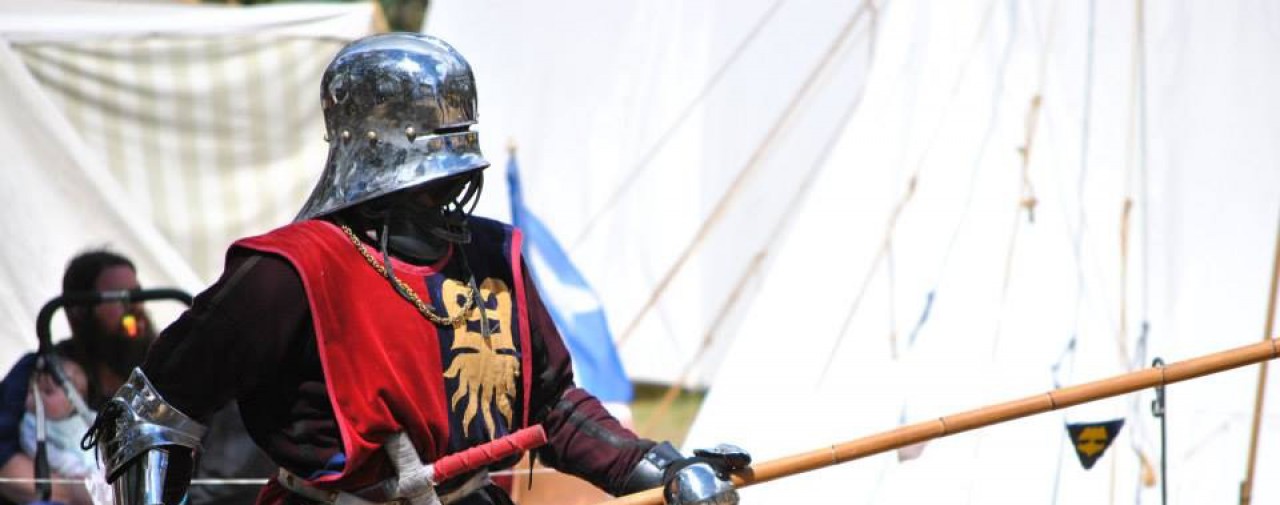For all the training and practice, it is tournaments and wars that is the focus of our efforts.
It is here we bring together all that we have learnt and practiced. He we get to see how well we stack up against all the others.
Tournaments also give us an opportunity to show off all the banners shields and gear that go together to make our events more than just a sporting meet.
What is import for all of us to understand is that success is a varied and sometimes complex animal.
For some of us it is the prise of reaching finals and then being the final victor of the day. But let us be real, this is not going to be the outcome for all of us.
So then, why compete?
Completion is possibly mare about the process then the outcome. A tournament gives you something to work towards,. Think about how well you did in Rowany Fighter Auction last year; do you want to go an extra round the next time? Giving yourself such goals can encourage you to train and practice rather than just turn up. It forms a point of focus to give your efforts a bit more purpose.
Competition can give you an insight to your strengths and weaknesses that free sparing never will. This is an essential part of learning. To quote Duke Radnor “For all our study, drills, interpretation and postulations, we are not prepared to perform in the midst of the fight without hazarding our bodies and/or egos in earnest contest. Unless your practice embraces the real threat of failure, you are not advancing. There’s no substitute for the real thing.”
Remember here that such a test is about learning. To be defeated in a tournament is a lesson in were you defence is weak or were your attack needs work. Never look on such an outcome as failure but rather as a window to future success.
Tournaments give you a unique way to deal with fear and stress in a relatively safe environment. There is the fear of failure and sometimes the fear of pain and being hurt (remember the last really hard but-wrap). Stress is also a natural part of the competitive environment. Being able to cope and then control these feelings can be very valuable both inside and outside of the tournament field. Stress also brings with it adrenaline. Adrenaline release, like any chemical reaction in your body, can be adjusted to and tempered through repetition and training. You might begin your tournament career attacking all out, unnecessarily tiring yourself out and missing all kinds of opportunities, but you should end your career fighting like a fighter pilot – calm and clear minded, unshakable emotionally, and focused on the task at hand.
Camaraderie is also a big by product of our combat endeavours, particularly wars. It is by talking to the field together that bonds of friendship are created and strengthened. There are not that many no-shit-there-we were stories from training sessions.
This is fun. Walk out onto the field, banners snapping in the breeze, armour gleaming to face your opponent as the crowed becomes hushed and the lay-on is called. It is wonderful to be part of such a spectacle. No matter what the outcome, here is your moment in the centre of it all.
The glory of victory. OK, let’s face it, winning is fun! It is a great rush to stand victorious on the field. Even if it is your only victory on the day it is still a victory and yours alone Victory in competition, especially if it is a difficult competition, is very rewarding and a big ego boost. There’s nothing wrong with enjoying that, and having that as a goal is itself very motivating in competition. In any tournament there are many victories. There is the success of the novice who just being able to compete in a full event is success. There is the person who has never won a tournament bout getting to the third round. There is the squire who finally managed to execute a new technique crisply. There is the person who has fought harder and further than they have ever done. A tournament has many victory songs; you just need to listen out for them.
I will end with something I stole from somewhere else and changed only a little-
Today, while there is breath on your lips, remember well that one day you will be forever but a memory of one who walked this earth in a blink of history’s eye. As you look around you, see today’s champions. See those Knights who have knowledge but whose fires burn weak at the twilight of their visit here. See the young who stand at the edge of a clearing, waiting to fill it with their potential. And look to the future to see that sooner than you know, you will be just a memory whose best achievements and actions will be little more than ripples at the edge of the universe.
So, while you still can, fan the flames inside you and go for a ride. See what you can do. Make some noise. Enter the field and let the world know you were here. Step boldly into the place champions are made and take your best shot. So that one day, when your tassels sit dusty in a box, and the cheers are just echoes of the past, there will be a ripple in the universe however far away that says to all it meets, “I was here. I fought. Maybe I won, maybe lost, but I was noticed. Now tell me, what have YOU done lately?”
